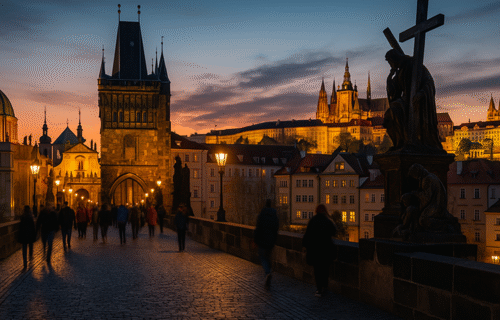Central Europe’s tourism industry is booming again, but behind the glossy growth figures, a quieter challenge is emerging. Visitors are returning — yet many come only once. For Slovakia, the Czech Republic, and Hungary, the task now is not to recover from the pandemic, but to convince travellers to stay longer, explore more, and come back.
Slovakia’s tourism sector has rebounded in value, with record revenues and rising domestic travel. But the country’s greatest weakness may be visibility. Despite its alpine peaks, mineral springs, and medieval towns, Slovakia remains one of Europe’s least-known destinations. International travel agencies say the country “doesn’t market itself loudly enough,” relying heavily on word-of-mouth or spillover from Vienna and Kraków.
Infrastructure remains another hurdle. Train and road connections outside Bratislava or the High Tatras can be slow or unreliable, limiting weekend or short-stay tourism. Service quality is uneven, particularly in smaller resorts where language barriers and staff shortages persist. Rising prices have also dulled Slovakia’s “affordable” image — a shift that could push budget-conscious travellers elsewhere.
Still, industry observers see potential. Slovakia’s blend of mountain, spa, and eco-tourism aligns well with Europe’s growing appetite for slower, sustainable travel. But that will require better promotion abroad and year-round transport links — not just seasonal resorts.
Prague remains one of Europe’s star destinations, but its success has come at a price. Overcrowding, noisy nightlife, and inflated prices in the city centre have changed the visitor experience. The Czech capital has long attracted low-cost party tourism, which brings volume but not necessarily value. Local businesses say that while visitor numbers are high, spending per tourist has fallen.
Meanwhile, regional destinations — from spa towns like Karlovy Vary to cultural sites in Moravia — still struggle for international attention. Transport links exist, but marketing focus remains almost entirely on Prague.
Authorities have taken small steps to rebalance tourism, including promoting “authentic local experiences” and encouraging visitors to stay longer outside the capital. But it’s an uphill task. As one Czech tourism official admitted recently, “Prague sells itself. The challenge is convincing people to discover the rest of the country.”
Hungary’s tourism statistics look strong. Visitor numbers are back near pre-pandemic highs, and hotel revenues are rising sharply. Yet for many travellers, perception issues linger. Some Western European markets still associate Hungary with political friction and uncertainty, despite its safety and infrastructure quality.
Budapest dominates to a similar degree as Prague — vibrant, photogenic, and crowded. Other destinations, from Lake Balaton to the Tokaj wine region, are improving but remain seasonal and less known internationally.
Costs are another factor. Inflation and high VAT on tourism services have made Hungary more expensive than visitors expect, especially compared to neighbouring countries. At the same time, a shortage of trained hospitality staff has led to inconsistent service standards outside top hotels.
Even so, Hungary is investing heavily in conference facilities, wellness centres, and cultural events to diversify tourism and extend stays beyond city weekends.
Across Central Europe, the tourism recovery is impressive but uneven. The problem is not attracting visitors — it’s persuading them to explore beyond the familiar highlights. Slovakia has the nature, the Czech Republic has the culture, and Hungary has the infrastructure, but all three face structural weaknesses: labour shortages, overdependence on capital cities, and limited off-season appeal.
The OECD and Eurostat both note that Central European tourism has reached a crossroads. The next phase of growth will depend less on sheer volume and more on quality — from service skills to digital access and sustainability.
As one industry analyst put it in a recent panel discussion:
“The region doesn’t need more tourists. It needs repeat visitors — people who come back for different reasons. That’s the true test of maturity.”
Source: CIJ EUROPE analysis based on national statistics, OECD Tourism Trends 2024, Eurostat, KSH Hungary, Czech Statistical Office, and Slovak Statistical Office (Tourism Satellite Accounts 2023–2025).
